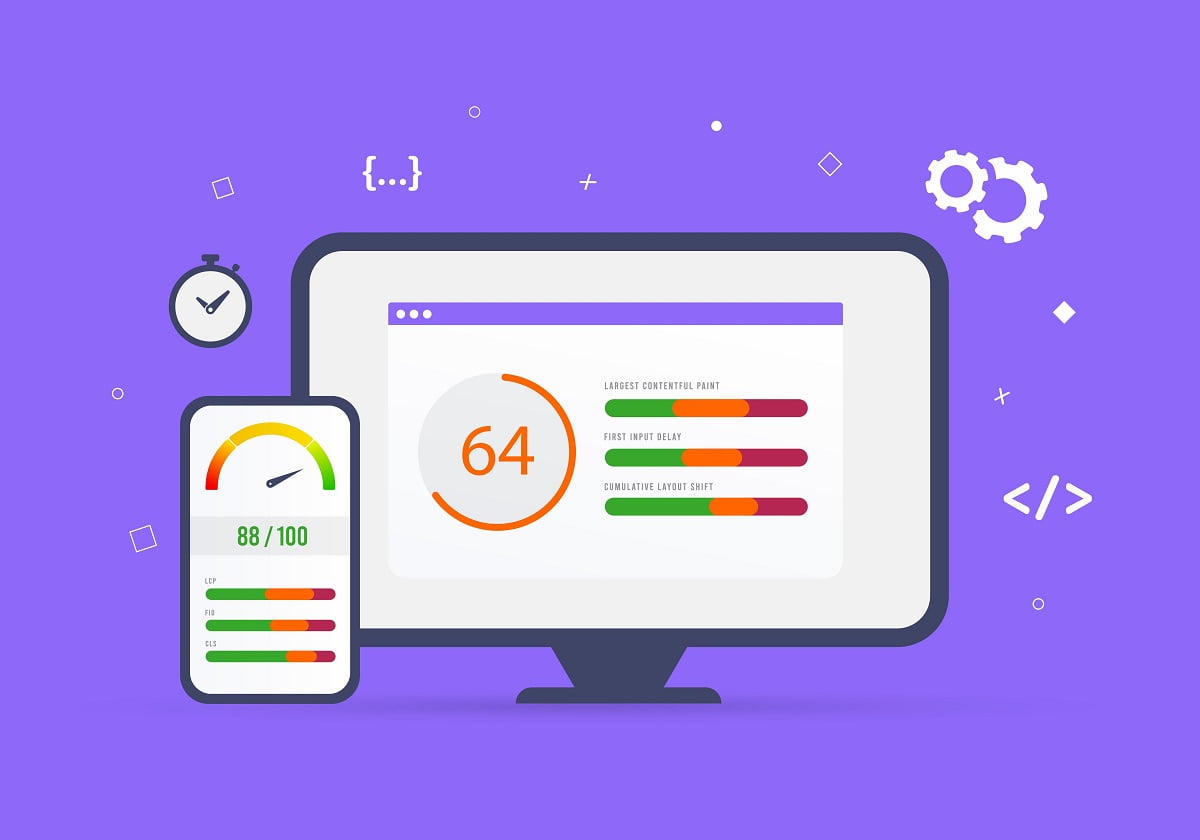Key On-Page Techniques For Optimizing Your Website

Key on-page techniques are also very useful in the improvement of your site?s position in search engines and its visibility. With such on-page SEO strategies, you can enhance your website performance, increase organic traffic, and drive up the conversion rates. In this article, we will talk about the impact of On-Page Optimization on your website and walk you through some great ways to get it right.
Importance of on-page optimization
On-page optimization is an important part of website development as it is all about enhancing the visibility and ranking of a website on the search engines. This entails techniques that are applied directly to the web pages which make them easy to navigate and also to be picked up by search-engines.
Keywords and phrases are more likely to be found higher in SERPs if the on-page elements of the website are technically optimized. These visibility enhancements will, in turn, promote organic traffic to your website which will ultimately boost conversions and business opportunities.
Website optimization lets search bots to better understand what kind of information is located both in the text and the page structure of your website. It comprises improving various components like meta tags, headings, URLs, images, alt texts and content to make them more precisely describing than the search engine and users can comprehend.
Another significant benefit of on-page optimization is improved user experience. When your website is optimized correctly, it becomes more user-friendly, easy to navigate, and loads faster. This leads to a positive user experience, reduced bounce rates, and increased engagement, all of which contribute to higher search engine rankings.
Key on-page techniques for website optimization
When it comes to optimizing your website for better performance and search engine rankings, there are several key on-page techniques you should consider implementing. These techniques focus on optimizing various elements within your website’s pages to improve user experience, increase visibility, and drive organic traffic. Let’s explore some of the most important on-page techniques:
1. Keyword Research and Optimization
One of the key on-page techniques is conducting thorough keyword research and optimizing your website’s content accordingly. By identifying the right keywords and incorporating them strategically into your titles, headings, meta tags, and body content, you can improve your website’s relevance and visibility in search engine results.
2. Quality and Engaging Content
Creating high-quality, engaging, and informative content is crucial for on-page optimization. Your website should provide valuable information to visitors, answer their queries, and keep them engaged. Well-written content not only helps improve user experience but also increases the chances of attracting backlinks and social media shares, which in turn can boost your website’s authority and visibility.
3. Proper Heading Structure
Organizing your content with proper heading structure is essential for both user experience and search engine optimization. Use <h1> tag for the main title of your page, followed by <h2> for section headings, and so on. This hierarchy helps search engines understand the structure and importance of your content, making it easier to index and rank your pages.
4. Optimized URLs
Optimizing your URLs is another on-page technique that can positively impact your website’s visibility. Use descriptive URLs that include relevant keywords and make them readable to both search engines and users. Avoid using generic URLs or those filled with random numbers and characters.
5. Meta Tags Optimization
Meta tags, including the meta title and meta description, play a crucial role in on-page optimization. Craft compelling meta titles that accurately reflect your page content and include relevant keywords. Similarly, write concise and engaging meta descriptions that entice users to click through to your website from search engine results.
6. Image Optimization
Images are an integral part of most websites, and optimizing them can have a significant impact on your website’s performance. Compress your images to reduce file size without compromising quality, add descriptive alt tags to provide context to search engines, and consider utilizing responsive images to improve mobile user experience.
7. Internal and External Linking
Internal linking refers to linking relevant pages within your website, while external linking involves linking to authoritative and relevant external websites. Both techniques contribute to improved navigation, user experience, and search engine visibility. Ensure that your internal and external links are relevant, properly anchor-texted, and enhance the overall user journey.
8. Mobile-Friendly Design
In today’s mobile-driven world, having a mobile-friendly website is crucial for on-page optimization. Make sure your website is fully responsive, loads quickly on mobile devices, and provides a seamless browsing experience across different screen sizes. Google and other search engines prioritize mobile-friendly websites in their rankings.
A user-friendly navigation structure is essential for both website visitors and search engines. Ensure that your website has a clear and intuitive navigation menu, allowing users to easily find and access different pages. Implement breadcrumb navigation, organize your content into categories, and use HTML sitemaps to assist search engines in crawling and indexing your website.
10. Page Load Speed Optimization
Page load speed is a critical factor in providing a positive user experience. Optimize your website’s page load speed by minimizing code, compressing images, leveraging browser caching, and utilizing content delivery networks (CDNs). A faster-loading website not only improves user satisfaction but also has a better chance of ranking higher in search engine results.
By implementing these key on-page techniques, you can greatly enhance your website’s performance, visibility, and overall user experience. Remember to regularly monitor and analyze your website’s performance metrics to identify areas for further optimization and improvement.
Optimizing website content and structure
When it comes to optimizing your website, it’s crucial to pay attention to both the content and structure. By ensuring that your website’s content is relevant, well-organized, and easily accessible, you can significantly improve its visibility and user experience. Here are some techniques to optimize your website’s content and structure:
1. Conduct keyword research
Keywords play a vital role in improving your website’s search engine rankings. Start by researching the keywords that are relevant to your business or industry. Use tools like Google Keyword Planner or SEMrush to identify popular keywords with a good search volume and low competition. Incorporate these keywords naturally into your website’s content.
2. Create high-quality and engaging content
Content is king in the world of SEO. Ensure that your website’s content is original, informative, and engaging. Write content that provides value to your visitors and addresses their queries or concerns. Use headings, subheadings, and bullet points to make your content scannable and easy to read.
Meta tags provide information about your web pages to search engines. Ensure that your meta title and description accurately represent the content on each page. Include relevant keywords in your meta tags to improve your website’s visibility in search engine results.
4. Use descriptive URLs
Creating descriptive and keyword-rich URLs helps search engines understand the content of your web pages. Instead of using generic URLs like “www.example.com/page1,” use URLs that describe the page’s content, such as “www.example.com/optimizing-website-content.”
Heading tags (H1, H2, H3, etc.) provide structure and hierarchy to your content. Properly using heading tags not only improves readability but also helps search engines understand the importance of different sections on your web pages. Utilize relevant keywords in your heading tags while maintaining a logical hierarchy.
A well-structured website with intuitive navigation enhances user experience and helps search engines crawl and index your web pages effectively. Ensure that your website has a clear and organized navigation menu. Use internal linking to establish connections between related pages, making it easier for users and search engines to navigate through your site.
7. Optimize images
Images are an essential part of any website, but they can also impact its performance if not optimized correctly. Compress and resize images to reduce load times. Add descriptive alt text to images, including relevant keywords where appropriate. This helps search engines understand the image content and improves accessibility for visually impaired users.
By implementing these key on-page techniques, you can optimize your website’s content and structure, leading to better search engine rankings, increased organic traffic, and improved user engagement.
Enhancing User Experience through Key On-Page Techniques
When it comes to website optimization, enhancing the user experience is of utmost importance. By implementing various key on-page techniques, you can significantly improve how users interact and engage with your website. In this section, we will explore some effective methods to enhance the user experience through Key on-page techniques.
1. Responsive Design
In today’s mobile-dominated world, having a responsive design is essential for a positive user experience. Ensure your website is built with a responsive layout that adapts to different screen sizes and devices. This will make your site easily accessible and visually appealing, regardless of the user’s chosen device.
A well-structured and intuitive navigation system allows users to find the information they need quickly and easily. Utilize clear menu labels and organize your content logically to guide users through your website effortlessly. Including a search bar can also enhance navigation and provide a convenient way for users to find specific content.
3. Fast Page Load Speed
Nothing frustrates users more than a slow-loading website. Optimize your web pages to load quickly by minimizing file sizes, leveraging browser caching, and optimizing code. A fast website not only improves the user experience but also positively impacts search engine rankings.
4. Engaging Multimedia
Make your website visually appealing and engaging by incorporating multimedia elements. Use high-quality images, videos, and interactive elements to capture users’ attention and convey your message effectively. However, ensure that multimedia files are optimized for web and do not negatively affect page load speed.
5. Readable Typography
The choice of typography plays a significant role in user experience. Select fonts that are easy to read on various devices and sizes. Maintain a suitable font size and contrast between the text and background to ensure readability. Consistency in typography throughout the website creates a cohesive and pleasant user experience.
6. Social Media Integration
Integrate social media buttons and sharing options into your website to encourage users to connect and share your content. This not only enhances user engagement but also helps to expand your online presence and increase brand visibility.
7. Personalization and Customization
Offer personalized experiences to users by implementing features such as user accounts, saved preferences, and customized recommendations. Tailoring the content and functionality of your website to individual users can greatly enhance their experience and keep them coming back for more.
By implementing these key on-page techniques to enhance user experience, you can create a website that is not only visually appealing but also user-friendly and engaging. Prioritize the needs and preferences of your users, and they will reward you with increased engagement, conversions, and loyalty.
Technical on-page optimization
When it comes to improving the visibility of your website on search engines, technical on-page optimization plays a crucial role. By implementing the following techniques, you can ensure that search engines can easily crawl and index your website, ultimately boosting your rankings.
1. Optimize your website’s loading speed
One of the key factors that affect search engine rankings is the loading speed of your website. Slow-loading websites not only frustrate users but also lead to lower search rankings. To optimize your website’s loading speed, consider compressing images, minifying CSS and JavaScript files, and leveraging browser caching.
2. Implement proper URL structure
Having a well-structured URL is important for both users and search engines. Make sure your URLs are descriptive, concise, and contain relevant keywords. Avoid using unnecessary characters or numbers in your URLs, as they can confuse search engines and users alike.
Header tags help search engines understand the structure and hierarchy of your content. Properly using header tags not only improves the readability of your website but also helps search engines determine the importance of each section. Make sure to use relevant keywords within your header tags to further optimize your content for search engines.
4. Optimize your images
Images are an essential part of any website, but they can also impact your website’s performance if not optimized properly. Use descriptive file names and alt tags for your images, as search engines rely on this information to understand what the image represents. Additionally, compress your images to reduce their file sizes without compromising quality.
5. Improve mobile-friendliness
Making your website mobile-friendly is possibly the most decisive condition for any business. The fact that mobile friendly websites are ranked higher by search engines is not a matter of secret. Thus adaptability of the websites to mobile screens becomes of critical importance. Websites should be tested on different screen sizes for the best user experience.
By implementing these technical on-page optimization techniques, you can enhance your website’s visibility on search engines and attract more organic traffic. Remember to regularly monitor and analyze your website’s performance to identify areas for further improvement.
Conclusion
Overall, optimizing your website with key on-page techniques is crucial for improving its visibility, user experience, and search engine rankings. By implementing keyword optimization, creating high-quality content, optimizing meta tags, improving site speed, and enhancing mobile responsiveness, you can ensure that your website attracts more organic traffic and delivers a seamless browsing experience to visitors.
Remember to regularly review and update your on-page optimization strategies to align with the latest industry trends and search engine algorithms. With continuous efforts towards on-page optimization, your website will be well-positioned to drive more traffic, engage users, and achieve your desired online goals.
FAQ’s
1. What are the benefits of on-page optimization?
- On-page optimization improves visibility, enhances user experience, and drives organic traffic, leading to higher conversions.
2. How does keyword research contribute to on-page optimization?
- Keyword research helps identify relevant keywords to incorporate into website content, improving its relevance and visibility in search results.
3. Why is mobile-friendly design essential for on-page optimization?
- Mobile-friendly design ensures accessibility across devices, improving user experience and search engine rankings.
4. What role do meta tags play in on-page optimization?
- Meta tags, including titles and descriptions, impact click-through rates and search visibility, making them crucial for on-page optimization.
5. How does image optimization affect on-page SEO?
- Optimized images improve page load speed, enhance user experience, and contribute to better search engine rankings.
6. What is the significance of internal and external linking in on-page optimization?
- Internal and external linking improves navigation, user experience, and search engine visibility, fostering a well-connected website ecosystem.
7. How does page load speed optimization impact on-page SEO?
- Faster page load speeds enhance user experience and search engine rankings, positively influencing on-page optimization efforts.





